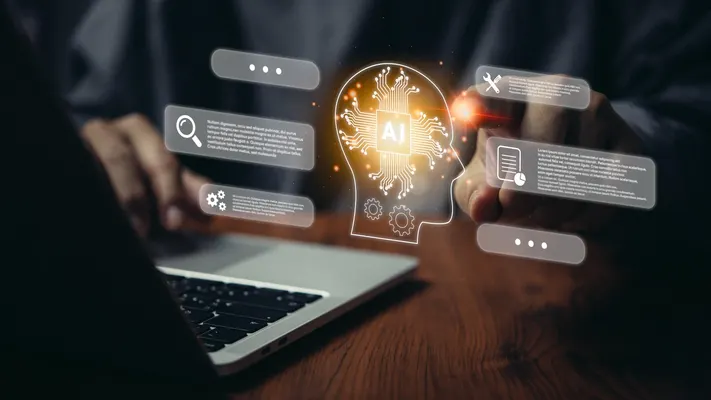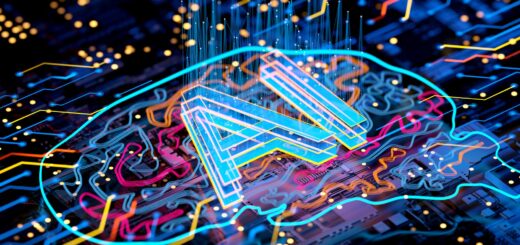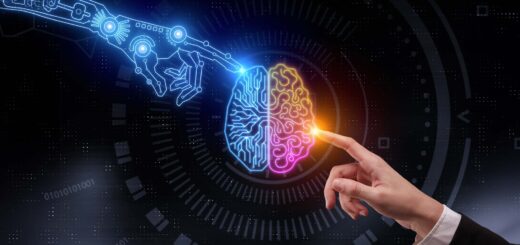Transforming Workflows with AI-Powered Automation

The complexity of modern workflows has increased significantly, with businesses and individuals handling an overwhelming volume of tasks daily. Managing data, optimizing processes, and ensuring efficiency have become critical challenges across industries. While traditional automation has helped streamline certain repetitive processes, it often falls short when flexibility and intelligent decision-making are required. This is where AI-powered automation is making a transformative impact.
AI is no longer just a tool for passive data analysis—it is now an active participant in decision-making, workflow management, and real-time optimization. Businesses leveraging AI-driven automation tools are experiencing faster execution, improved accuracy, and greater adaptability in their operations. From smart process automation to intelligent virtual assistants, AI is reshaping how work is done.
This article explores the growing role of AI-powered automation, its impact across different domains, and the challenges organizations must address to fully unlock its potential.
Beyond Traditional Automation: The Role of AI in Workflow Optimization
Traditional automation relies on predefined rules and structured data to perform repetitive tasks. While this is useful for simple operations, it lacks the adaptability needed to handle complex, dynamic environments. AI-powered automation goes beyond these limitations by incorporating machine learning, natural language processing (NLP), and predictive analytics, allowing systems to:
- Learn and adapt based on real-time data.
- Understand unstructured information such as emails, documents, and voice commands.
- Make autonomous decisions based on probability and context.
These capabilities are redefining how businesses manage operations, interact with customers, and optimize their workflows.
AI-Powered Automation Across Industries
The adoption of AI-driven automation is transforming industries by increasing efficiency, reducing costs, and enhancing decision-making processes.
1. AI in Business Process Automation (BPA)
- AI-driven Robotic Process Automation (RPA) tools are automating complex workflows, such as invoice processing, compliance checks, and customer onboarding.
- AI-powered document processing systems can extract key information from contracts, reports, and emails, reducing manual data entry.
- AI-enhanced scheduling and task management tools help businesses optimize workforce productivity and allocate resources dynamically.
2. AI in Customer Support and Virtual Assistants
- AI-powered chatbots and intelligent virtual assistants are providing real-time support, reducing human workload in customer service departments.
- NLP-driven AI can analyze customer sentiment, allowing businesses to prioritize critical support tickets and respond with personalized solutions.
- AI-enhanced self-service portals are enabling customers to resolve issues on their own, improving user satisfaction.
3. AI in Finance and Risk Management
- AI models in finance are automating fraud detection, identifying suspicious transactions in real time.
- AI-powered financial forecasting tools are analyzing historical data and market trends, providing businesses with accurate revenue predictions.
- AI-driven automation in banking is streamlining loan approvals, credit scoring, and regulatory compliance, reducing human error and processing time.
4. AI in Supply Chain and Logistics
- AI-powered inventory management systems predict demand fluctuations and adjust stock levels dynamically.
- Intelligent route optimization tools help logistics companies minimize delivery times and fuel costs.
- AI-enhanced procurement systems analyze vendor performance and suggest cost-efficient sourcing strategies.
These applications demonstrate how AI-powered automation is not just replacing repetitive tasks but also augmenting human decision-making and efficiency.
Key Benefits of AI-Powered Automation
The advantages of integrating AI-driven automation into business processes are extensive:
1. Increased Efficiency and Productivity
- AI automates tasks that previously required significant manual effort, allowing teams to focus on higher-value work.
- Automated decision-making reduces bottlenecks, ensuring smoother and faster workflows.
2. Cost Reduction
- AI-powered automation minimizes operational costs by reducing dependency on manual processes.
- Businesses save money on labor, error correction, and inefficient workflows.
3. Improved Accuracy and Consistency
- AI eliminates human error in data entry, calculations, and reporting.
- AI-driven quality control systems in manufacturing ensure consistent product standards.
4. Enhanced Decision-Making
- AI-driven analytics provide data-backed insights for executives, allowing for more informed strategic decisions.
- Predictive analytics help identify trends and anticipate potential risks before they escalate.
By adopting AI-powered automation, businesses are gaining a competitive edge in an increasingly digital economy.
Challenges in AI-Driven Automation
Despite its potential, implementing AI-powered automation is not without its challenges. Businesses must address technical, ethical, and organizational hurdles before fully leveraging AI’s capabilities.
1. Integration with Existing Systems
- Many companies struggle to integrate AI-driven automation with their legacy IT infrastructure, leading to inefficiencies.
- Transitioning to AI-powered solutions requires strategic planning, investment, and employee training.
2. Data Privacy and Security Concerns
- AI automation tools require large datasets to function effectively, raising concerns about data security and compliance.
- Businesses must implement strict data governance policies to ensure AI applications handle sensitive information responsibly.
3. Resistance to Change
- Employees may fear that AI-driven automation will replace jobs, leading to resistance in adoption.
- Organizations need to educate their workforce on how AI can enhance roles rather than eliminate them.
4. Ethical Considerations
- AI-driven automation decisions must be transparent and explainable, especially in finance, healthcare, and law enforcement.
- Bias in AI models can lead to unintended discrimination if not properly monitored.
Overcoming these challenges will be crucial in ensuring that AI-powered automation delivers maximum benefits while minimizing risks.
The Future of AI-Powered Automation
As AI technologies advance, automation will become smarter, more adaptive, and more autonomous. Some key trends to watch include:
- Hyperautomation: AI-driven automation will expand beyond repetitive tasks to optimize entire workflows and business processes.
- AI and IoT Integration: Smart devices and AI automation will work together to improve efficiency in industries like manufacturing, logistics, and energy management.
- Autonomous AI Agents: AI-powered bots will take on more complex decision-making roles, handling higher-level business processes with minimal human intervention.
- AI-Driven Personalized Automation: AI will customize workflows based on individual employee habits, optimizing productivity at a personal level.
The businesses that embrace AI-powered automation now will set the foundation for long-term success, positioning themselves for greater agility, efficiency, and competitiveness in the future economy.
Final Thoughts: AI as the New Engine of Productivity
AI-powered automation is not just about eliminating repetitive tasks—it is about enhancing human potential, optimizing workflows, and making smarter business decisions. By combining intelligent automation with strategic vision, businesses can unlock new efficiencies, drive innovation, and gain a significant advantage in their industries.
However, as AI-driven automation becomes more prevalent, organizations must also address the ethical, technical, and workforce challenges that come with it. The key to successful AI adoption lies in balancing automation with human oversight, ensuring that AI augments human intelligence rather than replacing it.
Looking ahead, AI-powered automation will be the foundation of next-generation enterprises, shaping the way we work, collaborate, and innovate.




